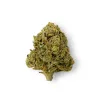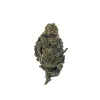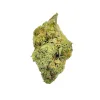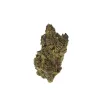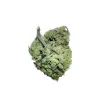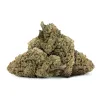Pulegone, a distinctive terpene with potential therapeutic properties, has captured the attention of researchers and enthusiasts in the realm of natural compounds.
In this article, we delve into the frequently asked questions about pulegone, its diverse effects, and its presence in various botanical sources. From its molecular structure to its potential impacts on health and well-being, we'll uncover the essential aspects of this intriguing compound.
What is the Pulegone Terpene?
Pulegone is a naturally occurring monoterpene, a type of organic compound commonly found in various plant species. It is particularly prevalent in plants belonging to the mint family, including peppermint, catnip, pennyroyal, and blue mint bush.
Known for its distinct sweet and minty aroma, pulegone has garnered attention for its potential therapeutic effects, although research on this specific compound is relatively limited.
Limited research indicates that pulegone may possess anxiety-reducing properties. The soothing and minty aroma of pulegone-containing essential oils like peppermint might contribute to a sense of relaxation and calm.
Pulegone's chemical structure consists of a six-membered ring fused to a five-membered ring, with various functional groups attached. This intricate arrangement contributes to its aromatic and distinctive odor.
Pulegone is most notably present in essential oils extracted from plants like peppermint, where it contributes to the refreshing scent and flavor. Additionally, it can be found in trace amounts within certain cannabis strains, adding a layer of complexity to the terpene profile of these plants.

What Does Pulegone Do?
Pulegone is a naturally occurring organic compound, specifically classified as a monoterpene, that is found in various plants, including mint species like peppermint, catnip, pennyroyal, and blue mint bush. While the exact effects of pulegone are not fully understood and more research is needed.
Pulegone contributes to the characteristic aroma and flavor of plants that contain it. For example, it's responsible for the minty and slightly sweet scent found in peppermint and other mint-related species.
It's important to note that while pulegone and other terpenes are naturally occurring compounds, they can have different effects depending on their concentration, the specific plant source, and how they are used.
The effects of pulegone might be influenced by individual differences and interactions with other compounds present in the plant. As with any natural remedy, caution should be exercised, and it's advisable to consult with a healthcare professional before using pulegone-rich products, especially in concentrated forms.
Role and Effects of the Pulegone Terpene
Pulegone is a terpene often responsible for its distinct aromas and flavors. This terpene is notably found in plants belonging to the mint family, and while its effects are not extensively studied, it is believed to contribute to several potential roles and effects.
One of the primary roles of pulegone is to contribute to the characteristic aroma and flavor of the plants in which it is found. Pulegone's minty and slightly sweet scent defines the aromatic profile of plants like peppermint, catnip, pennyroyal, and blue mint bush.
This aromatic identity not only attracts pollinators and repels pests but also enhances the sensory experience for humans interacting with these plants.
Pulegone plays a multifaceted role in the aromatic and potential therapeutic qualities of certain plants. While it is associated with aromatic experiences and traditional uses like aromatherapy and sedation, its precise effects require further scientific exploration.
As research advances, a clearer understanding of pulegone's mechanisms of action and its potential benefits may emerge, shedding light on its potential applications in natural remedies and wellness practices.
Some benefits of the pulegone terpene are:
-
Aromatic identity and distinct minty aroma
-
Aromatherapy for mood enhancement
-
Cognitive stimulation and increased alertness
-
Relaxation and potential sedative effects
-
Possible anxiety relief
-
Traditional use for reducing dizziness
-
Historical application as a natural food preservative
-
Contribution to the flavor profile of plants
-
Interaction with the limbic system for emotional impact
Pulegone in Nature and Botanical Sources
Pulegone is a naturally occurring organic compound found in various plants spanning the botanical spectrum. Its prevalence and distinctive aroma have led to its recognition as a key contributor to the olfactory and potential therapeutic qualities of several plant species.
The compound contributes a minty, slightly sweet, and refreshing aroma that not only attracts beneficial pollinators but also acts as a deterrent to herbivores and pests, thus helping to safeguard the plants against potential threats.
Throughout history, plants containing pulegone have been employed for their potential therapeutic benefits. Pennyroyal, a mint with a high pulegone content, has been traditionally used for its sedative and carminative properties.
Pulegone-rich essential oils have found applications in aromatherapy for relaxation and stress reduction. However, caution is advised due to its potential toxicity when used in concentrated forms.
Diverse Plant Sources of Pulegone: Variability and Applications
Pulegone can be found in various plants, but the concentration of Pulegone can vary widely depending on the species and even the specific cultivar of the plant. Some plants that are known to contain relatively higher levels of Pulegone include:
|
Type |
Description |
Additional Information |
|---|---|---|
|
Mentha pulegium |
Mint plant that contains pulegone |
Grown in Europe, North America, and North Africa |
|
Hedeoma pulegioides |
Herb in the Lamiaceae family that contains pulegone |
Native to North America |
|
Monarda fistulosa |
Herb in the Lamiaceae family that contains pulegone |
Native to North America |
|
Mentha x piperita |
Mint hybrid that contains pulegone |
Also known as peppermint |
|
Artemisia dracunculus |
Herb that contains pulegone |
Also known as tarragon |
What is Pulegone in Weed?
Cannabis is renowned for its rich array of aromatic compounds, including terpenes, which contribute to the distinctive scents and flavors of different strains. Pulegone is one of the many terpenes found in cannabis, albeit in relatively small quantities compared to more dominant terpenes like myrcene, limonene, and pinene.
Cannabis strains can vary widely in their terpene profiles due to factors like genetics, cultivation methods, and environmental conditions. As a result, the presence of pulegone in cannabis strains might not be consistent across the entire cannabis spectrum.
Pulegone's presence in cannabis strains adds a layer of complexity to the intricate chemistry of the plant. While its effects and significance are not fully understood, its minty aroma and potential interactions with other compounds underline the diverse and dynamic nature of the cannabis plant.
As research into cannabis terpenes continues, we may uncover more about pulegone's role in shaping the diverse effects and sensory qualities of different cannabis strains.
Is Pulegone Safe?
To ensure safety, it's essential to use pulegone-containing products responsibly and in accordance with guidelines. Follow recommended dosages for essential oils and other concentrated forms, and be mindful of potential interactions with other medications or supplements.
While the potential benefits of pulegone, such as its aromatic and potential therapeutic properties, are intriguing, it's important to strike a balance between its potential benefits and associated risks.
Whenever considering the use of pulegone-containing products, prioritize moderation and informed decision-making. Pulegone, like many natural compounds, can offer both benefits and risks. When found in its natural form within plants, pulegone is generally safe when consumed as part of a balanced diet.
However, concentrated forms like essential oils require careful consideration due to their potential for toxicity and adverse effects. To ensure safety, it's advisable to consult with healthcare professionals, practice responsible usage, and be attentive to individual sensitivities.
Health Benefits of Pulegone
Pulegone is found in various plants and is of growing interest due to its potential therapeutic properties. While research on pulegone's health benefits is still in its early stages, preliminary studies suggest that it may offer several potential advantages for various health concerns.
Pulegone has been identified as an effective antimicrobial agent. Studies have shown its ability to inhibit the growth of bacteria, particularly the salmonella strain responsible for food poisoning-type infections.
This antimicrobial property could have potential applications in maintaining microbial balance and preventing infections.
Pulegone has shown promise as an analgesic (pain-relieving) agent. Animal studies demonstrated that it inhibited nociception, the process responsible for the sensation of pain. These findings hint at pulegone's potential role in managing both occasional and chronic pain.
Individuals interested in utilizing pulegone for its potential therapeutic effects should exercise caution, consult with healthcare professionals, and await further scientific validation.
As the research landscape evolves, pulegone's role in supporting human health may become clearer, shedding light on its potential contributions to natural remedies and wellness practices.
Does Pulegone Cause Anxiety?
Pulegone has compounds are substances that have the potential to reduce anxiety and promote relaxation. Some studies have suggested that pulegone might have anxiolytic effects, meaning it could potentially alleviate anxiety symptoms.
However, the mechanisms through which pulegone exerts these effects are not fully elucidated.
Individual responses to compounds like pulegone can vary widely. Factors such as genetics, metabolism, and personal sensitivities can all play a role in how someone responds to pulegone. This variability makes it challenging to predict how pulegone might affect any one individual's anxiety levels.
Due to the limited research and the complex nature of anxiety, caution should be exercised when considering pulegone as a potential remedy for anxiety. Individuals seeking anxiety relief should consult with healthcare professionals before using pulegone-containing products, especially considering potential risks and individual sensitivities.

Pulegone and Digestive Health
Pulegone is a naturally occurring organic compound that is found in various plants.
Is often associated with potential digestive health benefits due to its various pharmacological properties and it belongs to a class of organic compounds known as monoterpenes, which are often found in essential oils and are responsible for their characteristic aromas and flavors.
The pulegone terpene is a compound that has shown potential for promoting digestive health. Its anti-inflammatory, anti-spasmodic, and antimicrobial properties make it an intriguing candidate for addressing digestive issues.
However, due to its potential risks at high doses, it's essential to approach pulegone with caution and to seek guidance from healthcare professionals when considering its use for digestive health purposes.
Aromatic Influence: How Pulegone Shapes Sensory Experiences
Pulegone carries a distinct and recognizable aroma characterized by its minty, cool, and refreshing notes. This aroma is often associated with feelings of cleanliness, rejuvenation, and clarity.
When encountered in natural settings or incorporated into fragrances and products, pulegone's aroma has the potential to evoke a sense of calmness and invigoration simultaneously.
The olfactory system, responsible for our sense of smell, has a direct connection to the brain's limbic system, which governs emotions and memories. As a result, the aroma of pulegone-rich compounds can trigger vivid memories and elicit emotional responses.
For instance, the smell of peppermint, rich in pulegone, might remind someone of festive holidays or comforting moments, enhancing their overall mood.
Pulegone's aromatic influence is a testament to the power of scent in shaping our sensory experiences. From invoking memories and emotions to promoting relaxation and culinary delights, pulegone's unique minty aroma offers a diverse range of benefits.
By understanding its potential and adhering to safe practices, individuals can harness pulegone's aromatic properties to enhance their overall sensory journey and well-being.
Decoding Pulegone's Molecular Structure: Unveiling Its Blueprint
Pulegone is represented by the chemical formula C10H16O, which indicates its composition of 10 carbon atoms, 16 hydrogen atoms, and one oxygen atom. This formula offers a glimpse into the arrangement of atoms within the molecule, forming the foundation of pulegone's properties.
Pulegone exists in different enantiomeric forms, with the (+)-pulegone being the (5R)-enantiomer of p-menth-4(8)-en-3-one. Enantiomers are mirror-image isomers that have the same molecular formula but differ in their spatial arrangement.
This stereochemical aspect contributes to the compound's interactions with other molecules and its distinct effects. Exploring the molecular structure of pulegone unveils the intricate arrangement of atoms that underpins its aromatic, biological, and sensory properties.
As we delve into its blueprint, we gain a deeper appreciation for pulegone's diverse effects, from its aromatic influence to its potential contributions to various industries. This understanding serves as a foundation for harnessing pulegone's benefits while ensuring safety and responsible utilization.
Is Pulegone Polar or Non-Polar?
The chemical structure of pulegone consists of a complex arrangement of carbon, hydrogen, and oxygen atoms. Its molecular formula, C10H16O, indicates that it contains 10 carbon atoms, 16 hydrogen atoms, and one oxygen atom. This arrangement gives rise to the compound's aromatic properties and distinctive aroma.
Polarity in molecules is often determined by the presence and arrangement of different types of atoms, as well as the symmetry of the molecule. The electronegativity of atoms, which reflects their tendency to attract electrons, also plays a significant role in determining polarity.
As such, pulegone can be considered a compound with moderate polarity due to the presence of polar bonds (such as C-O) and the arrangement of its atoms, although it may not exhibit extremely strong polarity like some other molecules.
This polarity could impact its interactions with other compounds, solubility in various solvents, and potential effects in biological systems.

Pulegone Handling and Considerations
Exercising caution is vital when working with pulegone. Consuming excessive amounts of this compound can result in drowsiness, underscoring the importance of adhering to recommended dosages.
Just as you would consult a healthcare provider before making significant dietary changes, seeking guidance before increasing your pulegone consumption is wise to ensure safe and responsible usage.
Is Pulegone Toxic?
The reassuring news is that pulegone is generally considered safe for most individuals when used appropriately. By following recommended usage practices, the likelihood of encountering significant toxicity concerns is minimal.
Is Pulegone Flammable?
While pulegone is classified as combustible, it does not have a tendency to ignite easily. However, it's crucial to handle it with care, avoiding exposure to open flames or high temperatures, to ensure its safe use.
The Bottom Line on Pulegone
Pulegone, a terpene with its unique minty aroma and potential health-enhancing properties, continues to captivate researchers and wellness enthusiasts. Its presence in various plants and its potential effects on digestion, relaxation, and well-being make it a subject of significant interest.
As our understanding of pulegone advances through scientific exploration, we uncover new dimensions of its effects and applications, showcasing its potential to enrich sensory experiences and contribute to holistic well-being.




